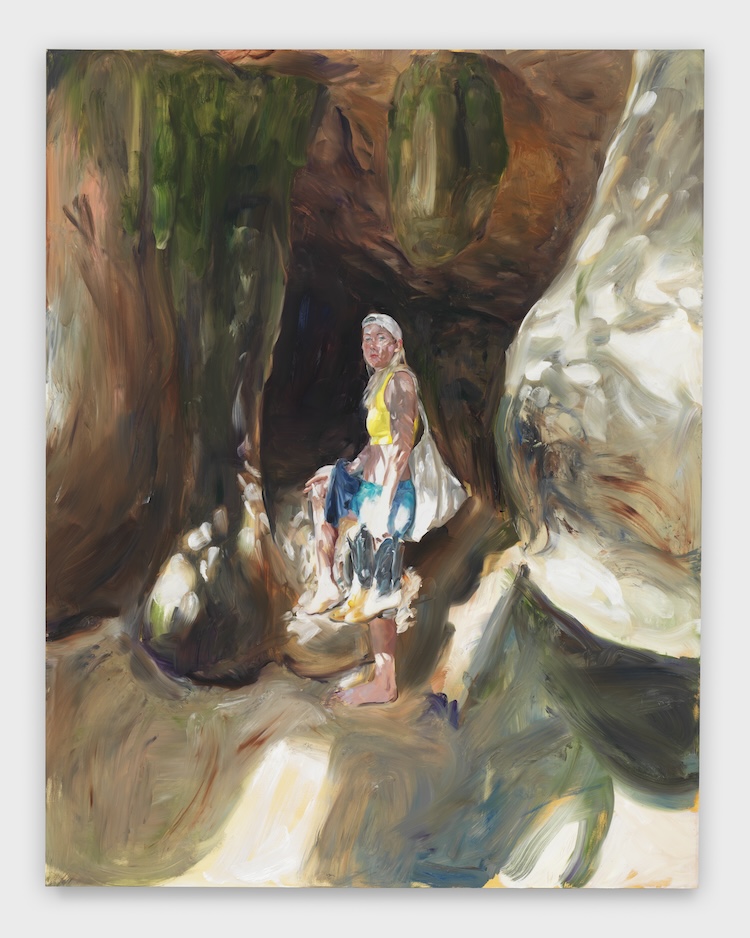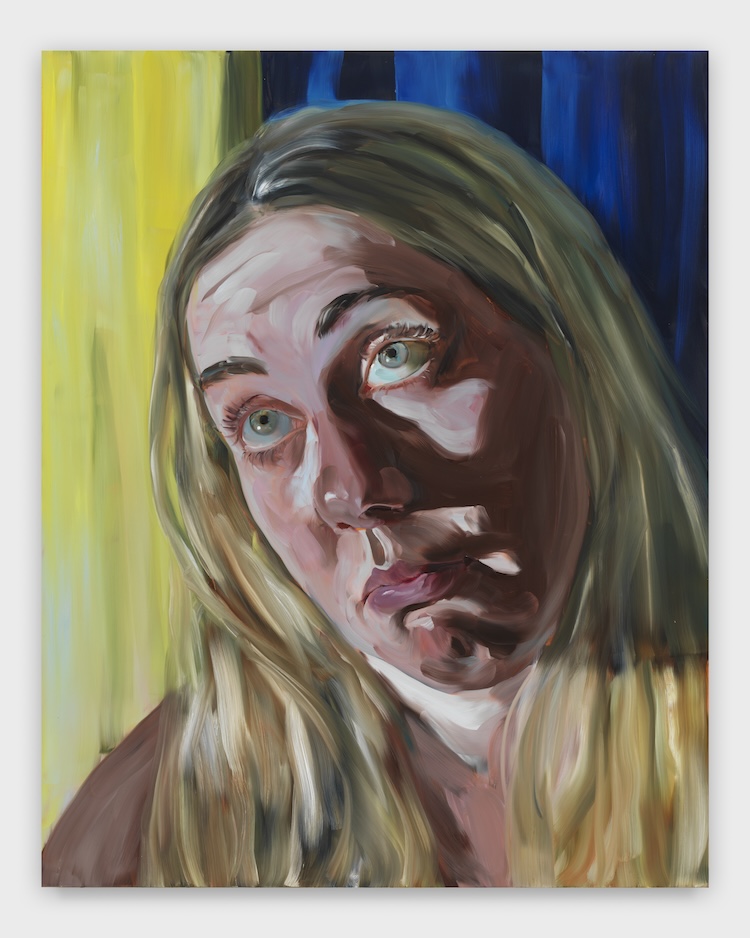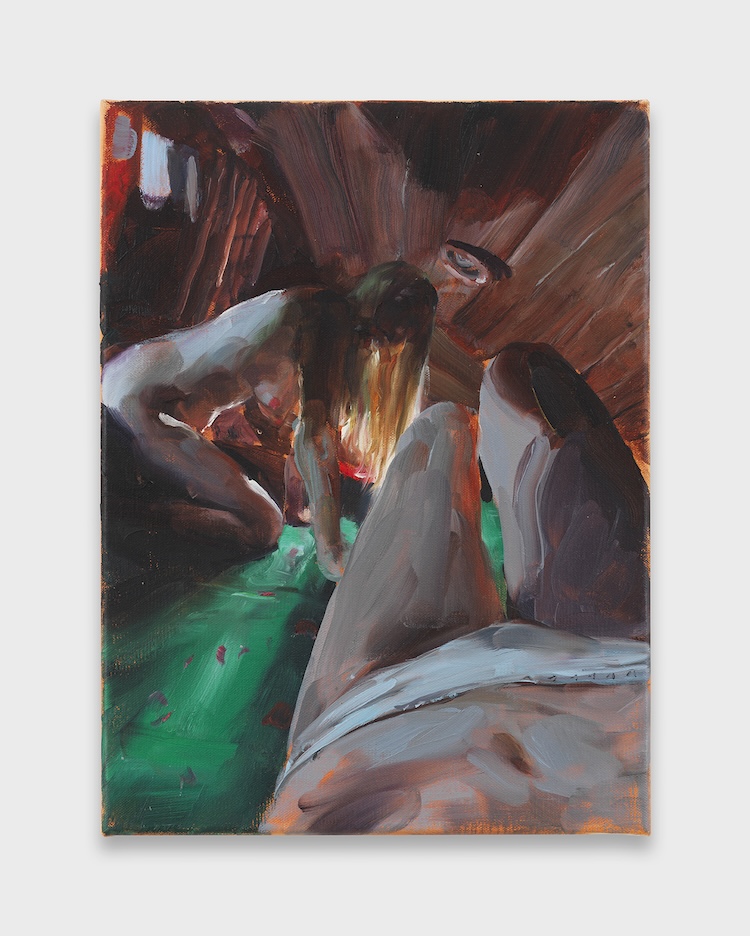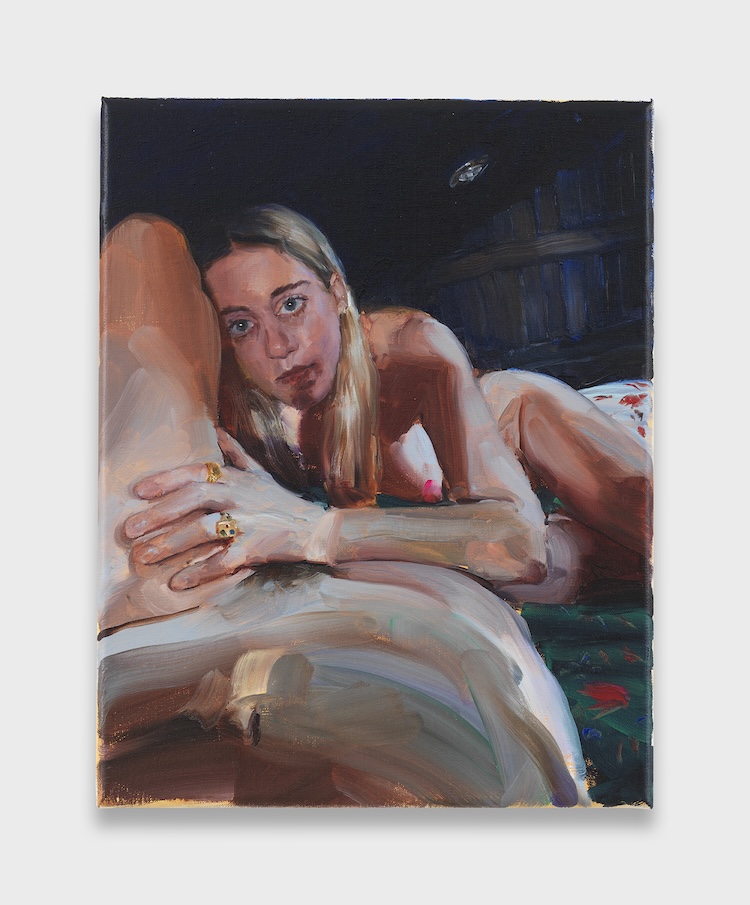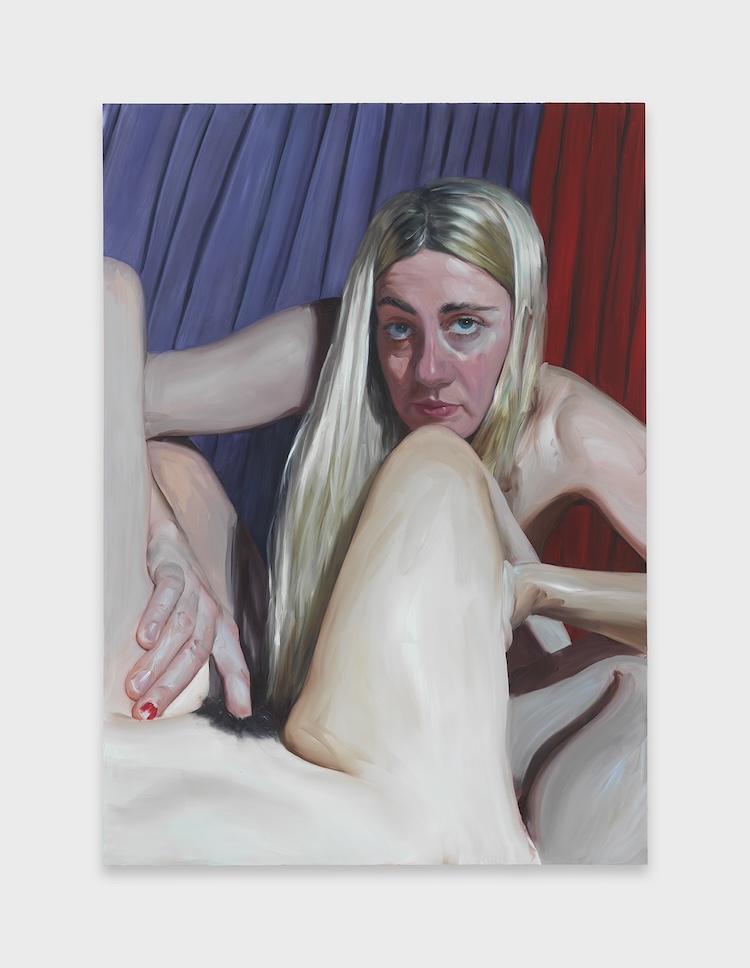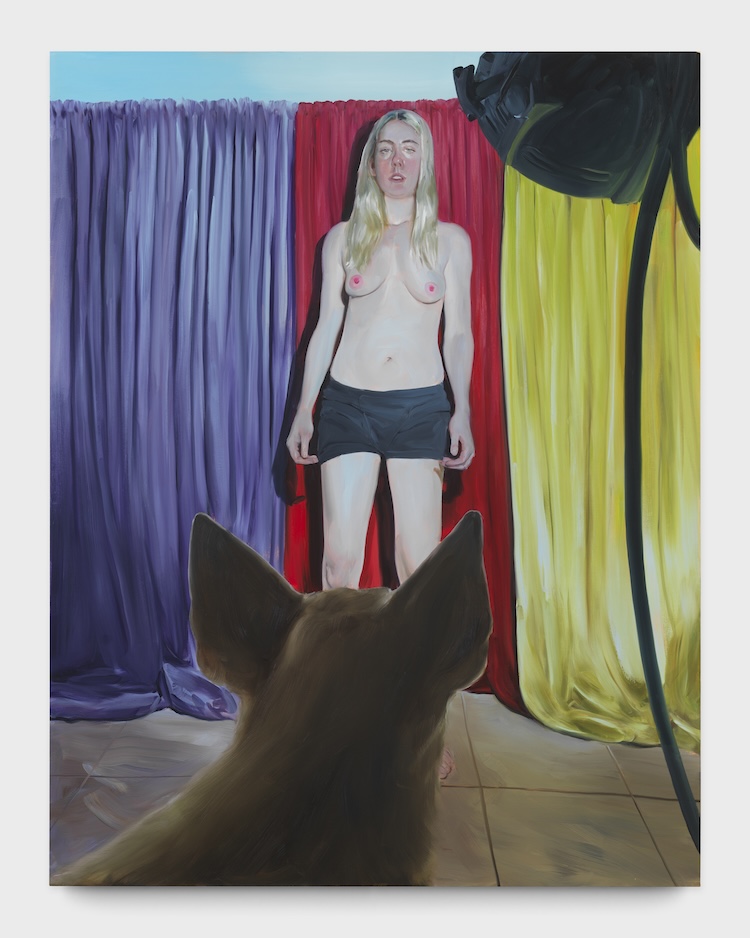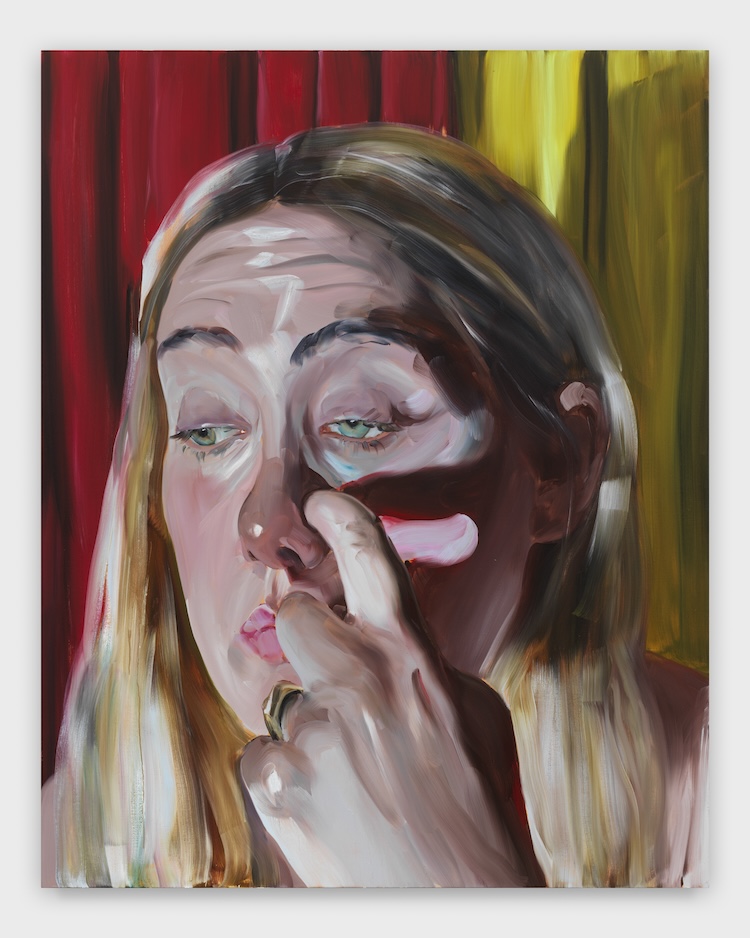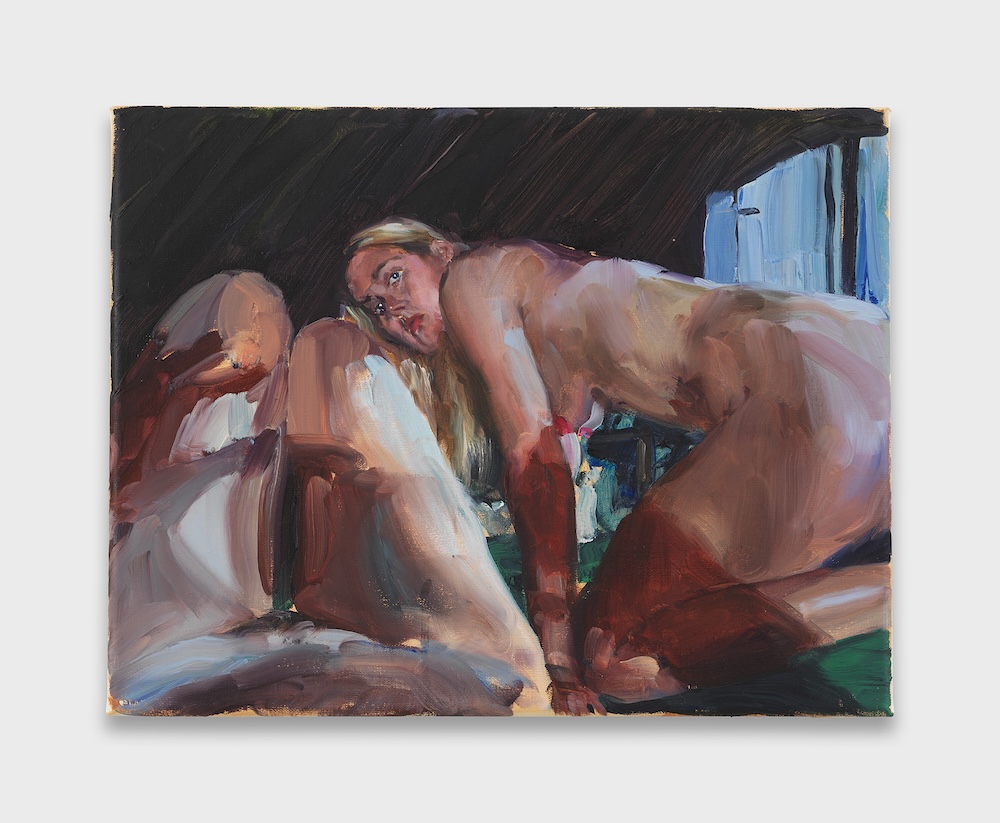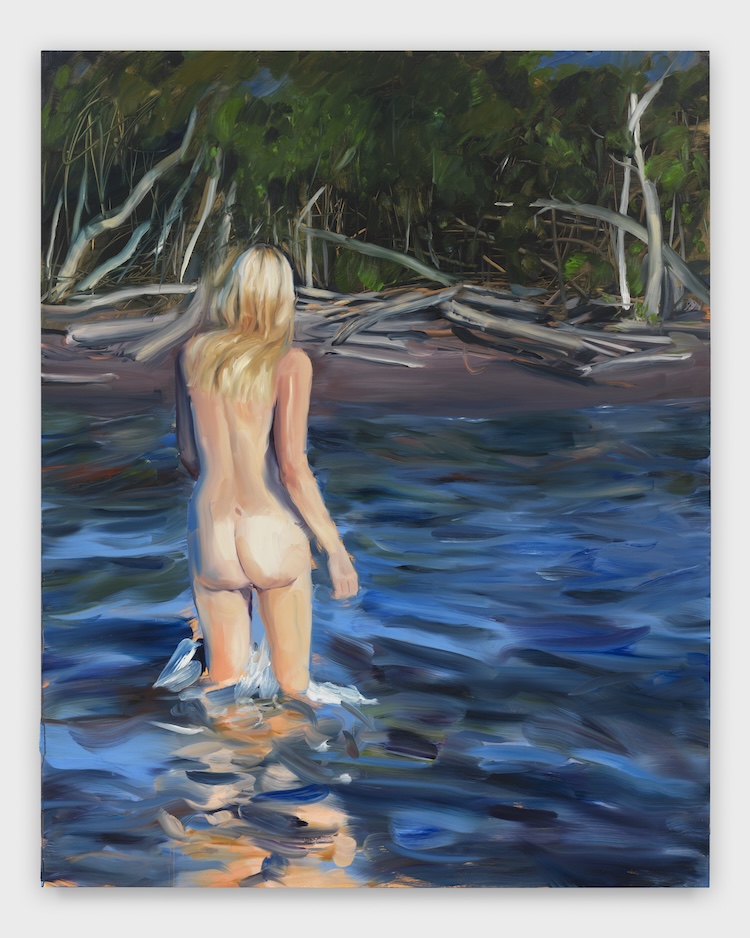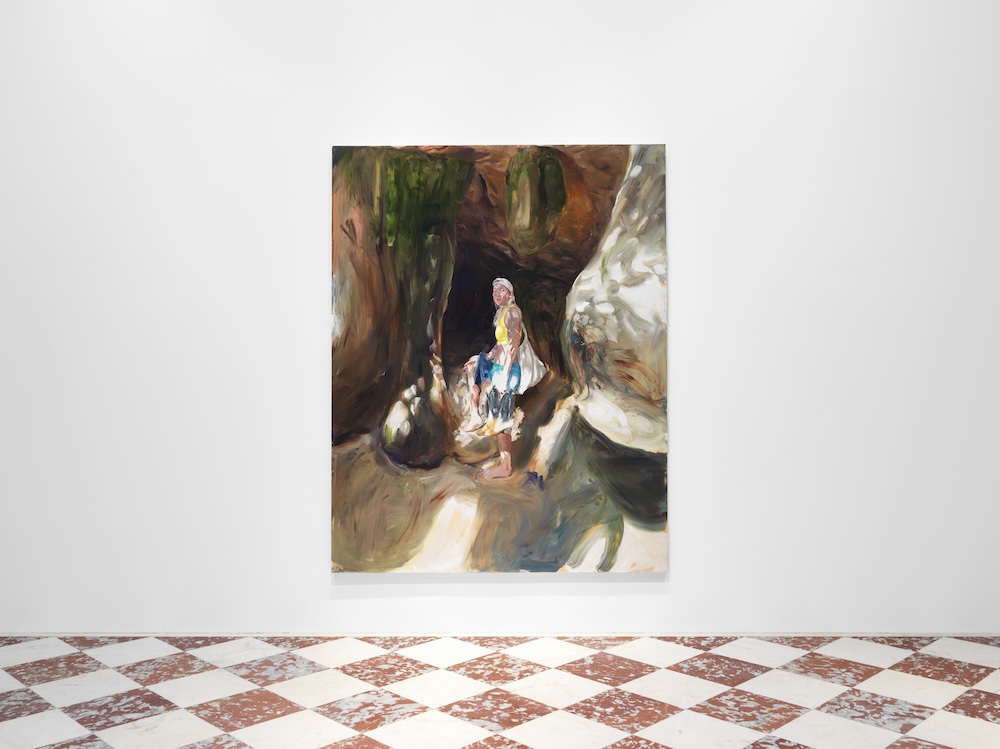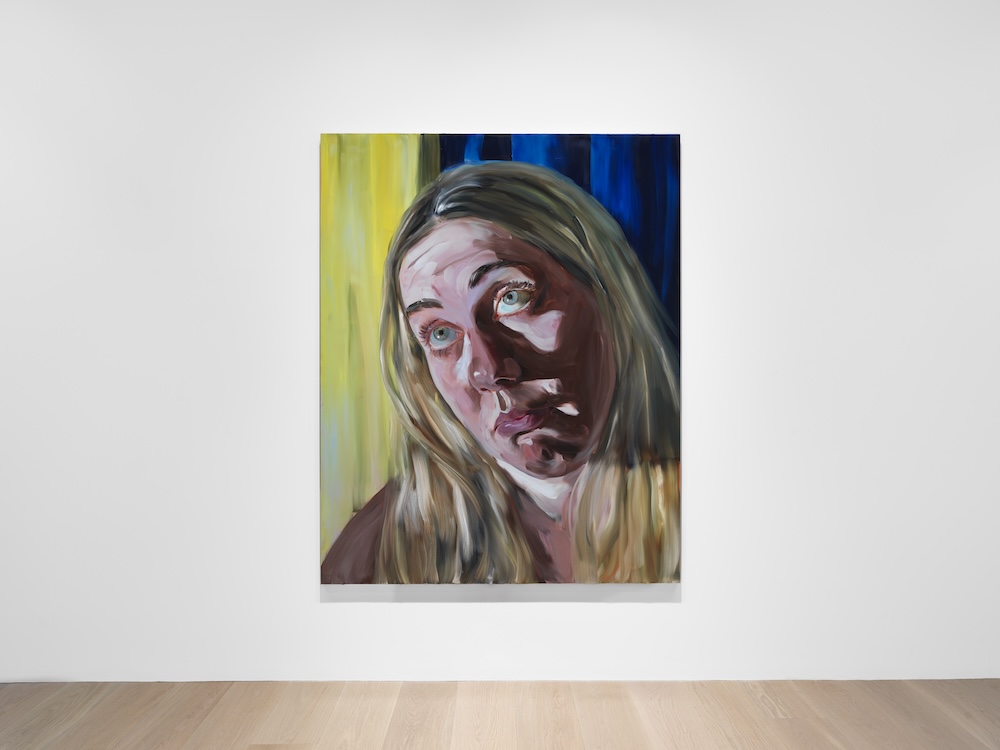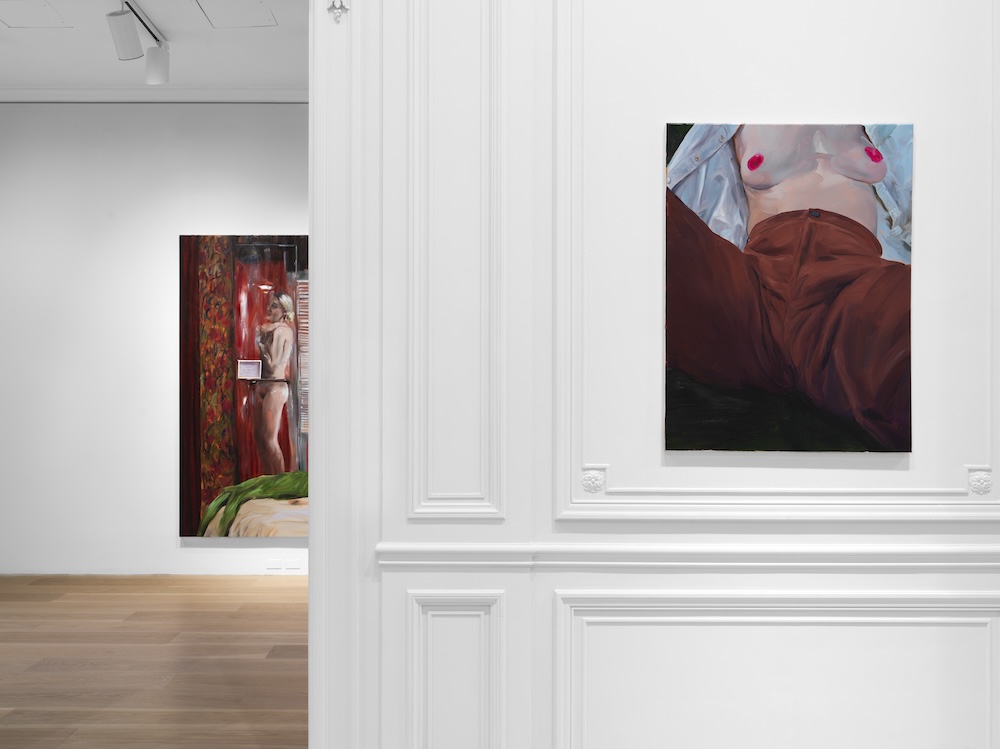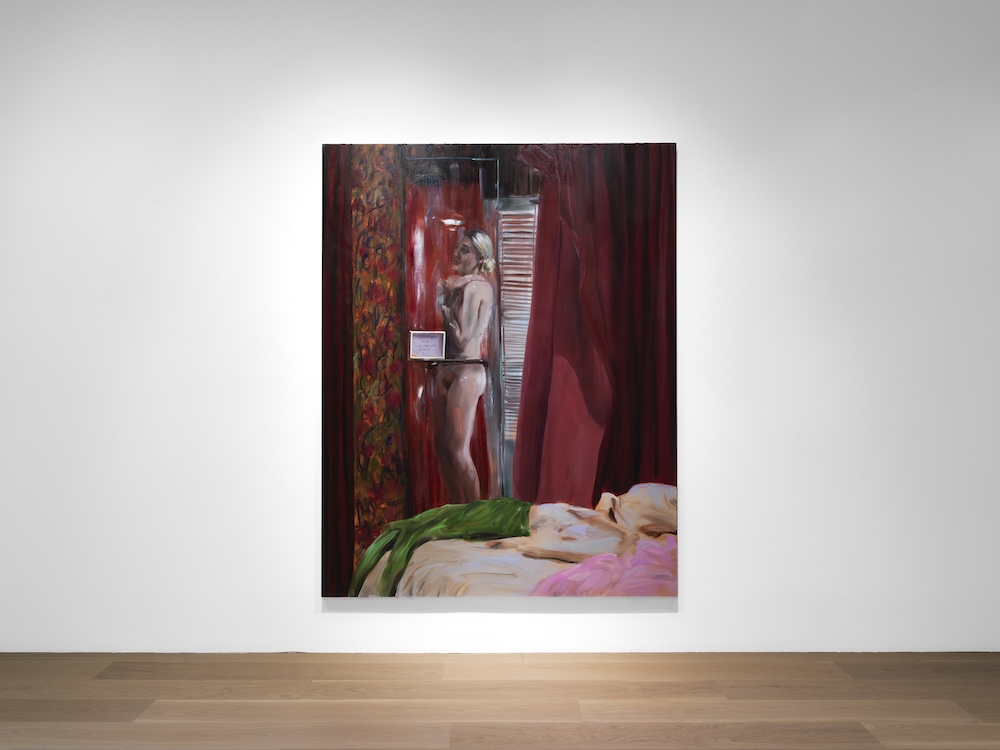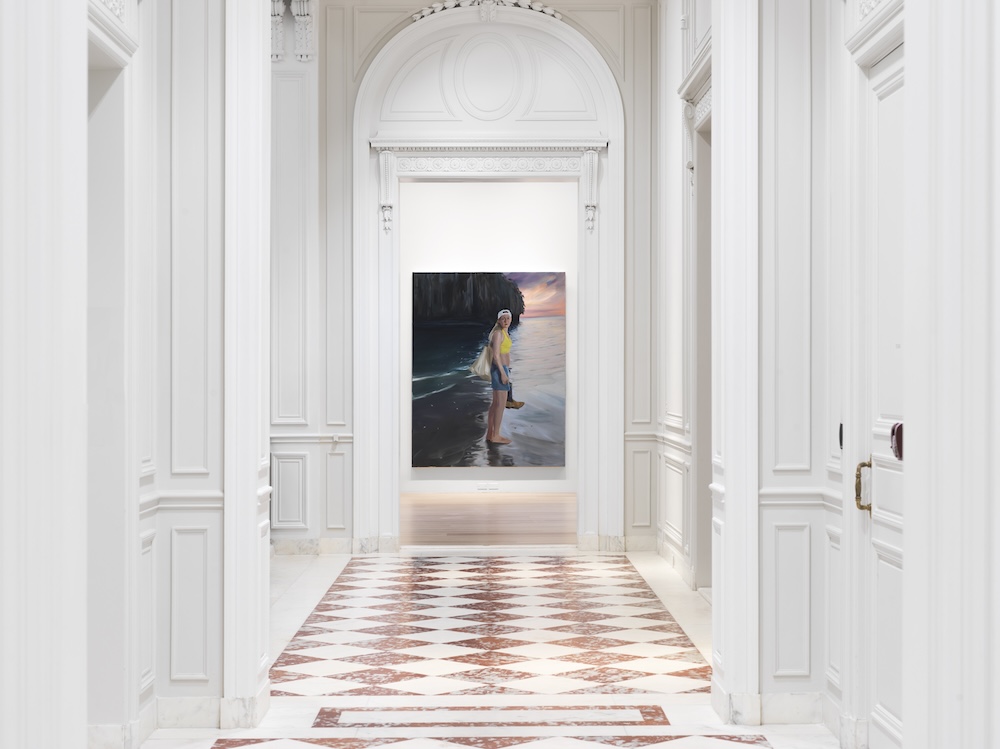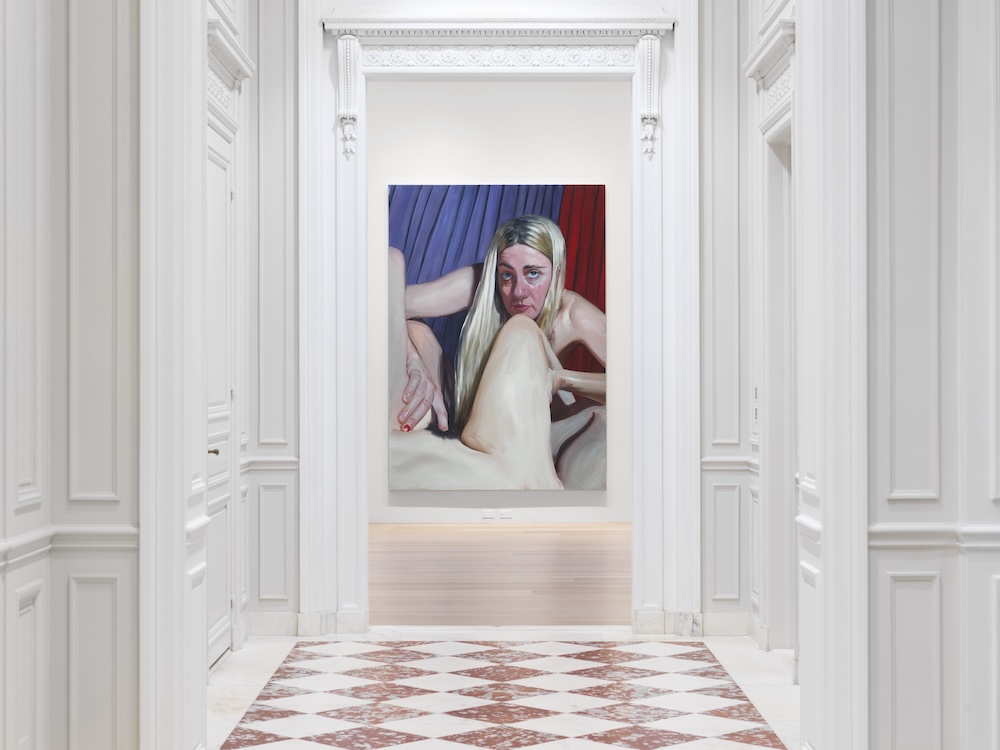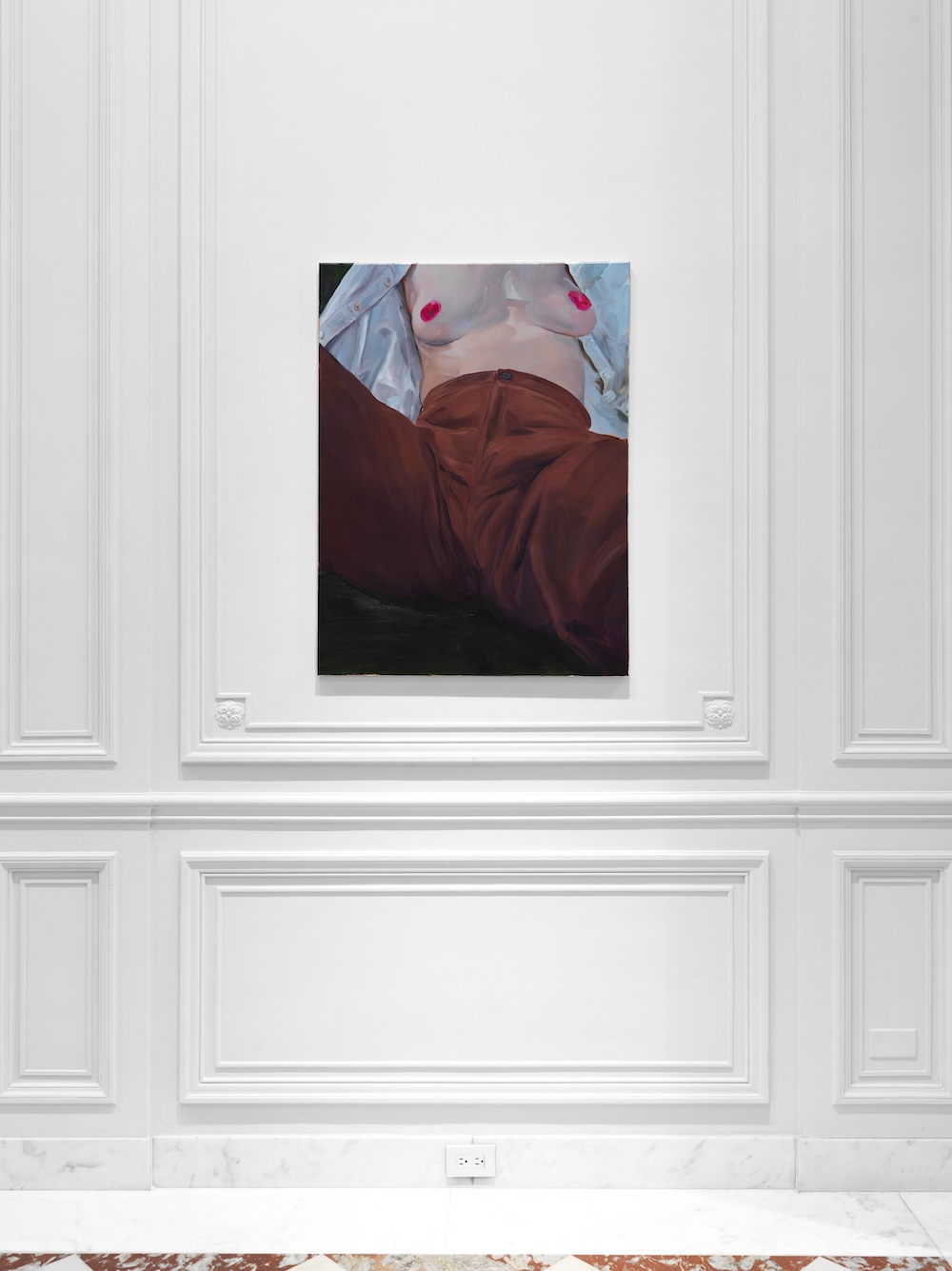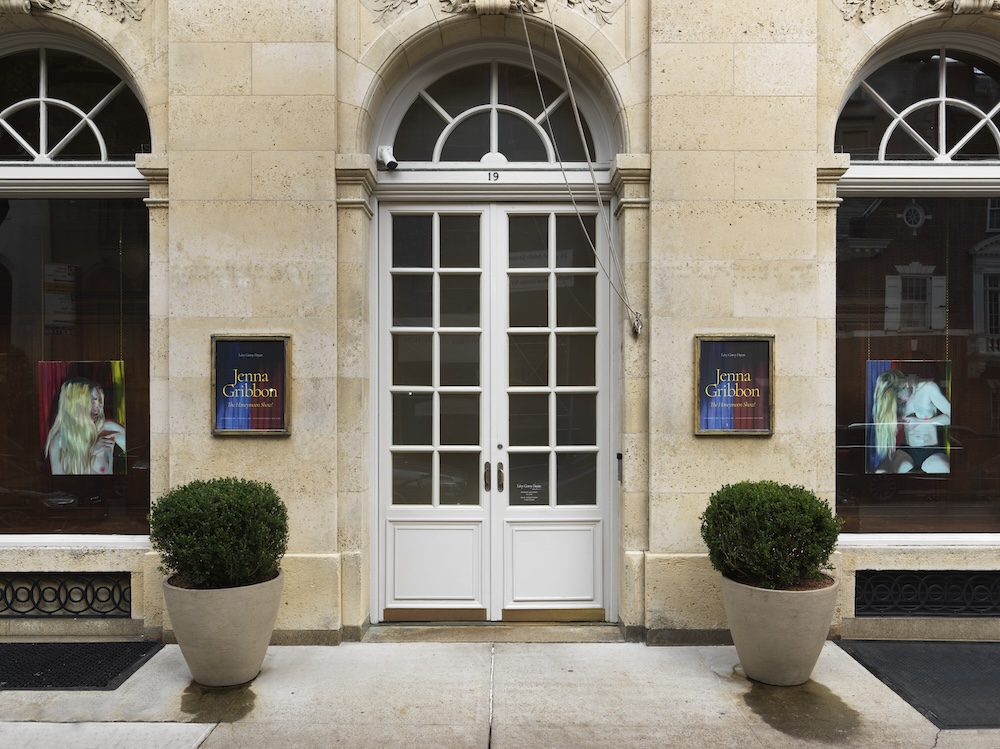Lévy Gorvy Dayan is pleased to announce its first solo exhibition with Brooklyn-based artist and Juxtapoz favorite, Jenna Gribbon. The Honeymoon Show! is a dual examination of intimacy and subjecthood represented through portraits of the artist’s wife, Mackenzie Scott. The exhibition is portrayed in two acts—with scenes from the couple’s honeymoon in Thailand juxtaposed against theatrically posed portraits of Scott, a musician who performs under the name Torres. Unraveling the dichotomies between fact and fiction, public and private, spontaneity and forethought, Gribbon explores the transformative act of looking through her vibrant new body of work. In a new essay, Alison M. Gingeras writes, “The act of looking—the consensual, two-way scopophilia between artist and muse—and creating agency for the person being watched (and portrayed) are leitmotifs that run throughout Gribbon’s oeuvre.”
The Honeymoon Show! asks viewers to question what is real versus invented. Scott’s relaxed poses and Gribbon’s depictions of lush jungle flora and dappled sunlight—through her signature alla prima technique—bring the viewer along on the couple’s tropical getaway. The Honeymoon paintings appear candid and informal; in reality, Gribbon returned to her studio and invented or reinterpreted the details she portrayed—obscuring the truth and enhancing feelings of closeness between the artist, her subject, and the viewer. The group concludes with a nude portrait of Scott in the shower in the couple’s hotel suite, recalling the art historical trope of the bather. Rumpled bedsheets and strewn clothing suggest an unposed composition, while the presence of the artist leaves open the possibility of manipulation.
Together with the Honeymoon paintings, Gribbon’s dramatic portraits of Scott posing in front of rich velvet curtains investigate earned and performed intimacy. Despite the formal setting, two smaller-scale portraits from the group are among the most intimate in the exhibition. In one, Scott points at a mole on her arm; in the other, she plucks a hair from her breast. Both show her in profile, not focused on the audience and fully immersed in her examination of her own body. In these two works, Gribbon renders Scott’s vulnerability—uncovering expressions previously unknown as she attempts to find new ways of looking at her wife.
Gribbon earlier employed small canvases to portray scenes of her life with Scott—reminiscent of the domestic tableaux created by late-nineteenth century Nabis artists such as Pierre Bonnard and Édouard Vuillard. For The Honeymoon Show!, Gribbon broadens her scale, rendering Scott as a larger- than-life figure. Three large-scale portraits feature Scott pantomiming various emotive states: pouting, pondering, and feigning disgust. Here, Scott puts on a show for Gribbon, and, by extension, the viewer—the backdrops in primary colors emphasize the constructed nature of these compositions. The magician’s assistant (2023) reveals a full-length view of Scott, seated nude with the couple’s young dog jumping onto her lap. They appear against the curtained background encircled by a bright spotlight, melding signifiers of personal domesticity and the public stage—and defying categorization as spontaneous or planned.
The Honeymoon Show! continues and complicates Gribbon’s exploration of subjecthood. Her exclusive use of Scott—painted in various sizes, poses, and locations—encourages empathy from the artist and the viewer; the more we see Scott, the more we know her and can interpret and acknowledge how she feels. Gribbon states, “I’m painting subjecthood and what it feels like to be looked at. The work is made with empathy. The purpose of using Mackenzie over and over again is to familiarize the viewer with her—so she becomes not just ‘the subject,’ but herself. The more we come to know her, the more we can feel for her in her various pictorial states.”
Throughout the exhibition, Scott acts as a performer and a proxy—deconstructing the traditional relationship between painter and subject. She actively participates in the work while representing and reflecting Gribbon’s experiences of looking, and, in turn, being seen. In several works, Gribbon blurs the line between artist and muse further by including herself in the scene. As both artist and subject, Gribbon asks what it means to understand and portray the experience of another.
All images Copyright Artists Rights Society (ARS), New York and courtesy of Lévy Gorvy Dayan
Installation images: Courtesy of Lévy Gorvy Dayan



